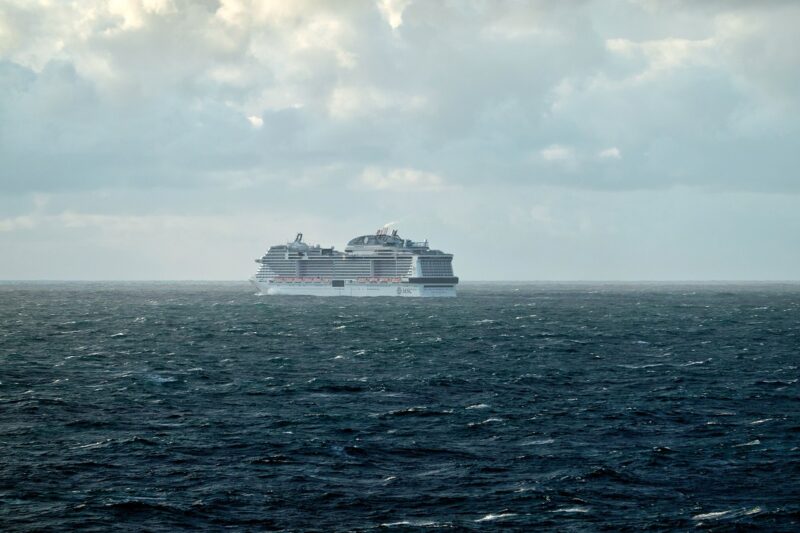
Cruise ships have transformed over the decades from modest vessels for sea transportation into floating cities, blending luxurious accommodations with a wide array of entertainment, dining options, and recreational activities. Intrigued by the grandeur of these man-made marvels? Join us as we dive into the world’s largest cruise ships to discover how they are redefining travel on the high seas.
1. The Evolution of Cruise Ships
The evolution of cruise ships began in the 19th century, initially catering to the wealthy elite seeking transatlantic passage. However, the late 20th century saw a significant shift. Technologies improved, and companies started to offer cruises as affordable vacation options for the masses. The introduction of mega-ships in the 21st century marked a new era, featuring extravagant amenities that would rival the finest hotels.
Key Milestones:
– 1900s: The earliest cruise ships, such as the SS Celebes, began catering to leisure travelers.
– 1970s: The Viking Serenade introduced larger vessels designed specifically for leisure travel.
– 2000s: Oasis of the Seas launched as the world’s largest cruise ship, setting new standards with its size and onboard offerings.
2. A Look at the Largest Cruise Ships
Today, the title of the world’s largest cruise ship is held by the Symphony of the Seas, owned by Royal Caribbean International. With a gross tonnage of 228,081 GT and capable of accommodating up to 6,680 passengers and 2,200 crew members, Symphony of the Seas is a marvel of modern engineering.
Key Features of Symphony of the Seas:
– Neighborhoods: The ship is divided into seven distinct neighborhoods, including Central Park, Boardwalk, and the Royal Promenade, each offering unique experiences.
– Dining Options: Over 20 dining establishments serving cuisines from around the world, ranging from fine dining to casual eateries.
– Entertainment: An ice rink, aqua theater, and Broadway-style shows ensure there’s never a dull moment.
– Activities: Features include surf simulators, zip lines, and a luxury spa, catering to every guest’s interests and age group.
– Accommodations: Various cabin classes from interior rooms to luxurious suites, many equipped with balconies and scenic views.
3. Onboard Amenities: More Than Just a Place to Sleep
Gone are the days when cruise ships were merely transport vessels. Today’s mega-ships offer expansive arrays of amenities, making them destinations in their own right.
What You Can Expect Onboard:
– Multiple Pools: Including adult-only areas, family zones, and slides that rival water parks.
– Shopping: Duty-free shops and luxury brands, providing guests the opportunity to shop while sailing.
– Health and Fitness: State-of-the-art gyms, yoga studios, and running tracks encourage guests to maintain their fitness routines.
– Spas and Wellness: Offering a variety of treatments from massages to acupuncture, allowing guests to relax and rejuvenate.
4. Dining Experiences For Every Taste
Dining on a cruise ship is an adventure of its own. Cruise lines curate a diverse culinary experience that caters to all palates. Symphony of the Seas, for example, features:
– Innovative Cuisines: Specialties from different cultures, including sushi bars, Italian trattorias, and American steakhouses.
– Casual Grabs: Quick-service restaurants provide burgers, tacos, and ice cream, perfect for a snack after a swim.
– Fine Dining: Exclusive restaurants with menus crafted by renowned chefs offer gourmet experiences.
5. The Experience of Cruising: More Than Just a Holiday
Cruising offers a unique blend of experiences that traditional vacations might not capture. Shipboard life creates a sense of community among passengers, as they share common spaces and participate in activities together. The experience can be life-changing:
– Cultural Exploration: Shore excursions take passengers to diverse and exotic destinations, allowing them to immerse themselves in new cultures.
– Connection: Many travelers form friendships that last well beyond the cruise.
– Variety: The opportunity to explore multiple destinations within one trip, all while enjoying the luxury of your floating hotel.
6. Environmental Considerations: Sustainability in Cruising
As cruise ships grow in size, so do concerns regarding environmental impact. The industry is increasingly taking steps to become more sustainable:
– Waste Management: Many ships now use advanced waste management systems to minimize their environmental footprint.
– Energy Efficiency: Newer ships are designed with eco-friendly technologies, including cleaner fuels and energy-efficient hull designs.
– Community Engagement: Cruise lines engage with port communities, often supporting local economies and environmental initiatives.
7. The Future of Cruising
The cruise industry continues to innovate, adapting to changing passenger preferences and environmental mandates. Future ships will likely prioritize further advancements in sustainability, luxury, and personalized experiences. Expect to see the rise of smart technology allowing passengers to customize their journey while allowing ships to operate more efficiently.
In conclusion, the world’s largest cruise ships offer an unparalleled travel experience, redefining luxury, entertainment, and hospitality on the high seas. These floating cities are not just about transportation; they embody a lifestyle and a culture that invites explorers from around the globe to embark on unforgettable journeys.
Whether you’re a seasoned cruiser or planning your first voyage, grasping the essence of these colossal vessels will inspire your next adventure.







